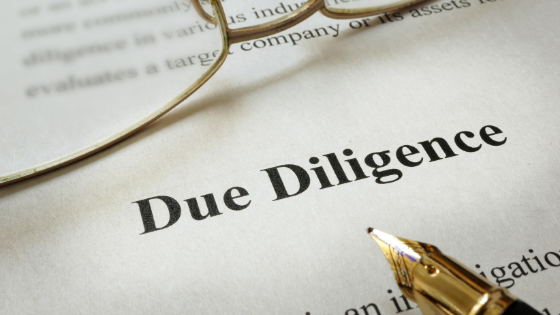Due diligence is often viewed with the same enthusiasm afforded to cleaning out your pantry. Which is to say, not much.
But these days, due diligence isn’t just a PR checkbox. Businesses may well be in legal trouble if they neglect human rights vis-a-vis due diligence.
That said, many safety workers may not understand due diligence. They think of it as a legal checklist reserved for mergers. Here’s why due diligence in workplace safety is just as important as due diligence in the boardroom.
What Is Due Diligence?
First, you have to understand what due diligence is.
Typically, due diligence is an investigation of a potential investment to confirm that all the facts lineup. This is why it’s usually performed before entering into a financial agreement with another company.
In safety, due diligence refers to the level of care, judgment, prudence, and activity that a person might reasonably be expected to perform. In other words, under due diligence, employers are expected to take all reasonable precautions to prevent workplace accidents and injuries.
To exercise due diligence, an employer must create and implement a hazard recognition plan and steps for corrective action if a problem is identified.
Why You Need It
With that in mind, let’s talk about why you need due diligence as part of your safety program.
Every Reasonable Precaution
First and foremost, you need due diligence because it’s the single best way to fulfill your legal safety obligation.
Under the guidelines of the Occupational Safety and Health Administration (OSHA), employers are legally required to provide a safe workplace. This includes taking all reasonable precautions to ensure that workplace conditions are safe and that hazards have been adequately addressed.
Due diligence is designed to ensure that you take every reasonable precaution for your workers. And if you practice it often, it will ensure that you make safety precautions a habit.
Mandatory Compliance
This means that due diligence is a good way to make sure that you meet your mandatory safety compliance requirements.
OSHA has a huge array of guidelines to ensure that industries address safety hazards. And while those guidelines are complex and ever-changing, ignorance of the law is not an excuse for breaking it.
OSHA isn’t afraid to enforce those rules, either. The current penalty for serious violations is up to $13,260 per violation. If it’s a willful or repeated penalty, the fine can get as high as $132,598 per violation, depending on the severity of the violation.
And keep in mind, OSHA isn’t the only one who enforces workplace safety. The Environmental Protection Agency (EPA) and the Department of Transportation (DOT) are just two examples of organizations that track workplace safety violations and penalize you for crossing the line.
You may also have to deal with local and state safety agencies, industry regulators, and even workers unions. Workers may be willing to tolerate a level of acceptable risk at work, but that doesn’t mean they need to tolerate unsafe working conditions just to pay the bills.
Due diligence helps you avoid the regulatory nightmare waiting on the other side of careless safety violations.
Implementing Due Diligence in Workplace Safety
Of course, knowing that you need due diligence in workplace safety and actually implementing it are two very different things. It's recommended to create a safety plan prior to executing any safety initiative. For more tips on developing the best strategies and solutions, visit the EHS Insight Blog.
